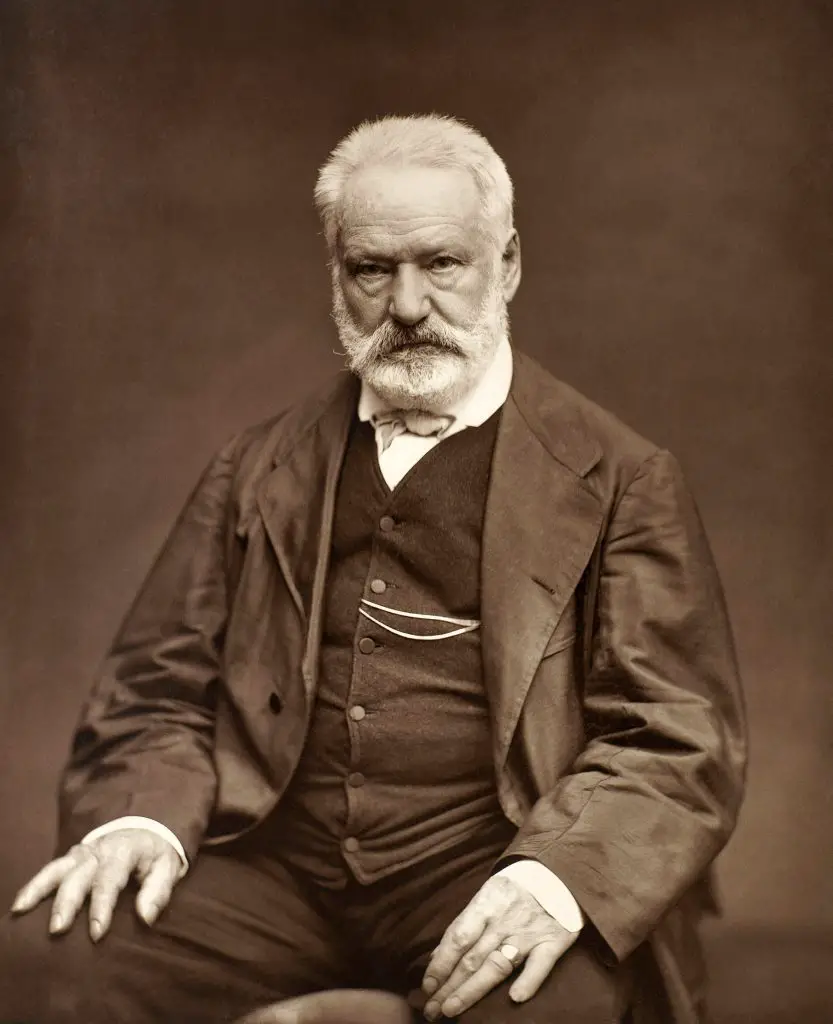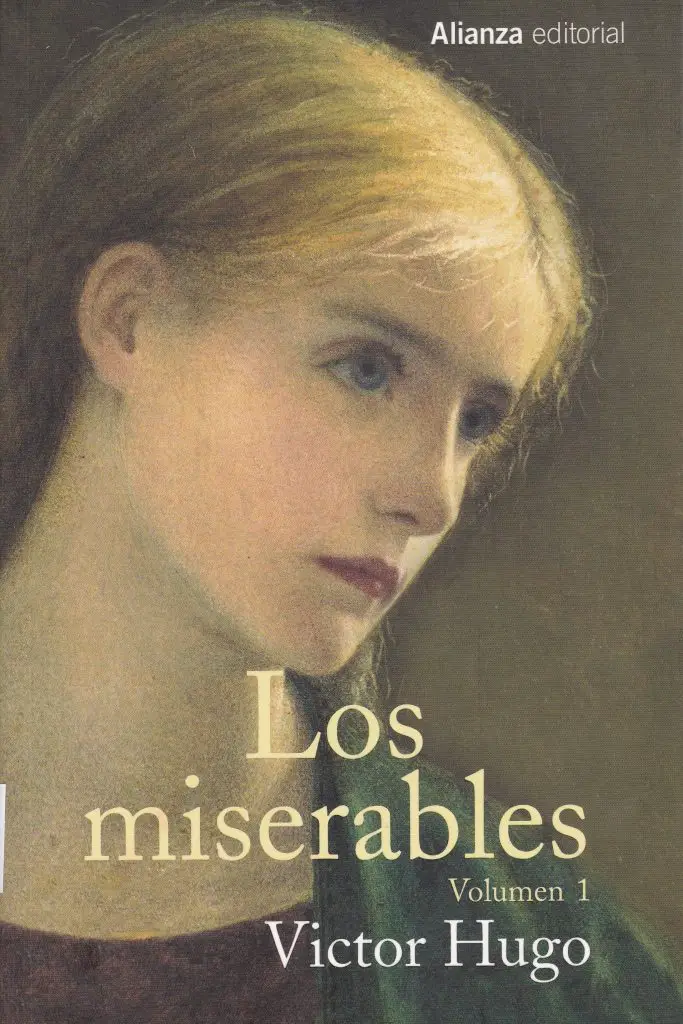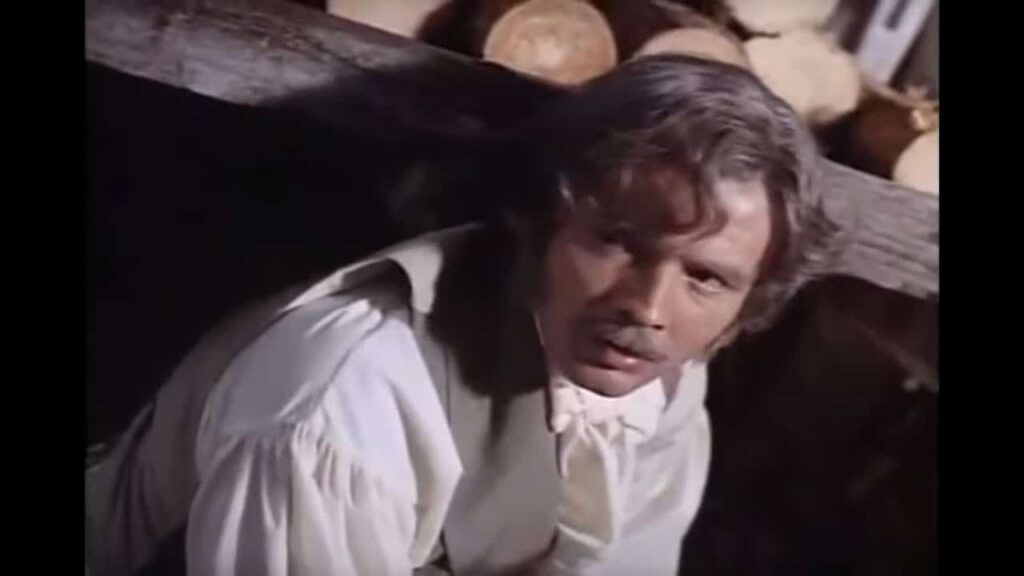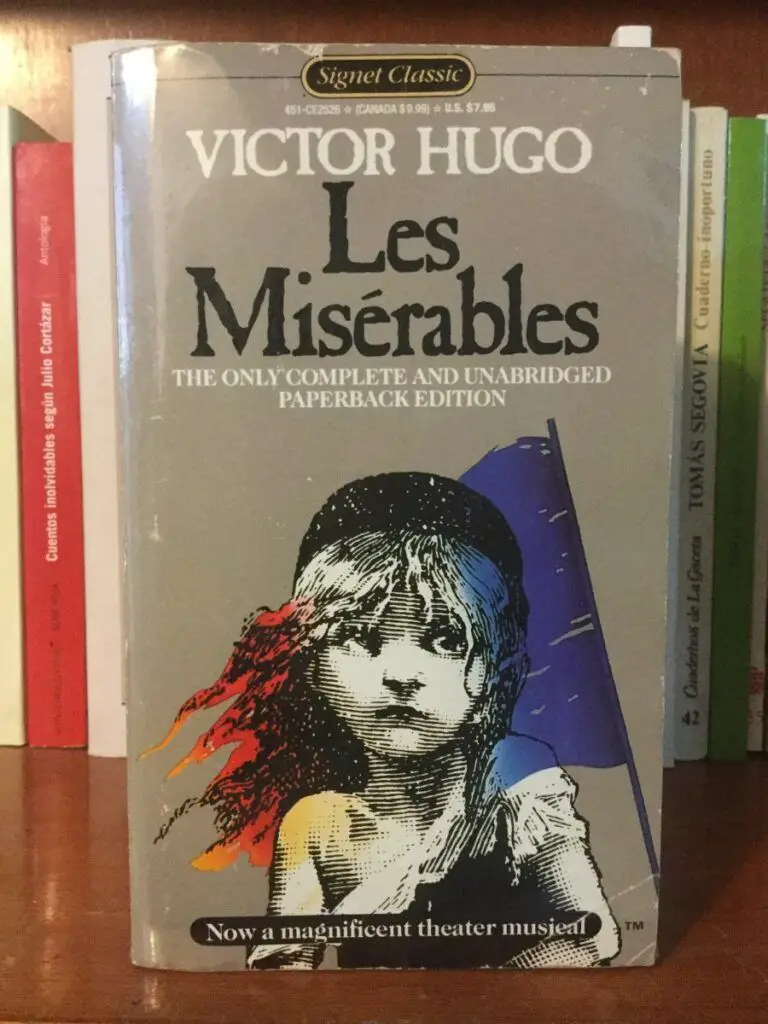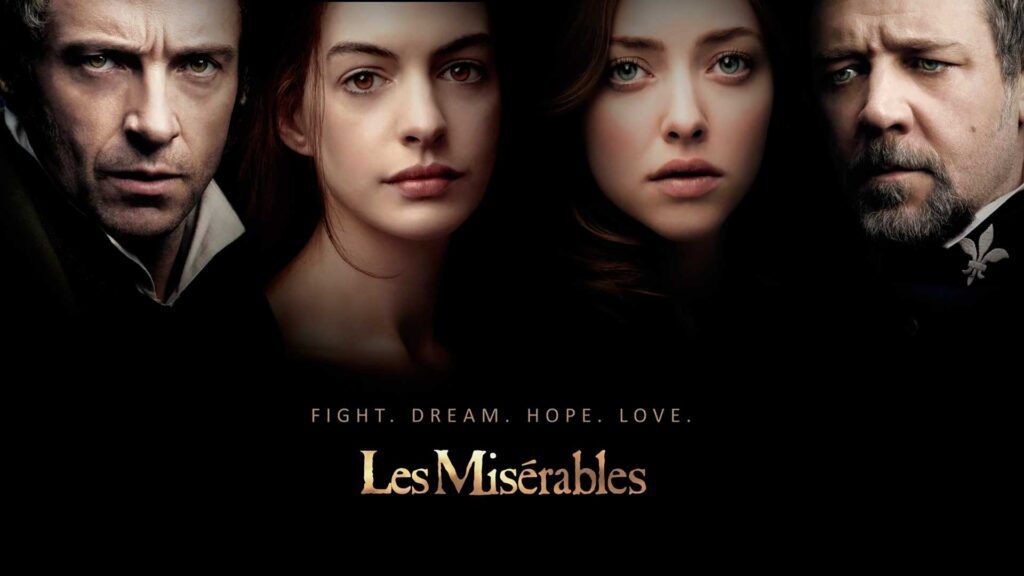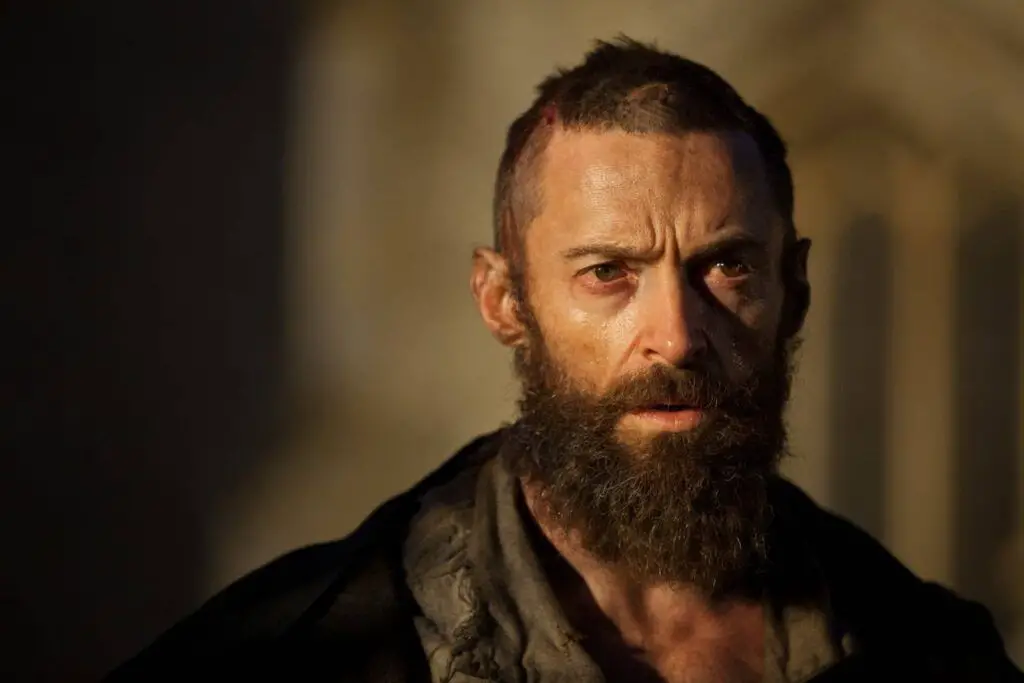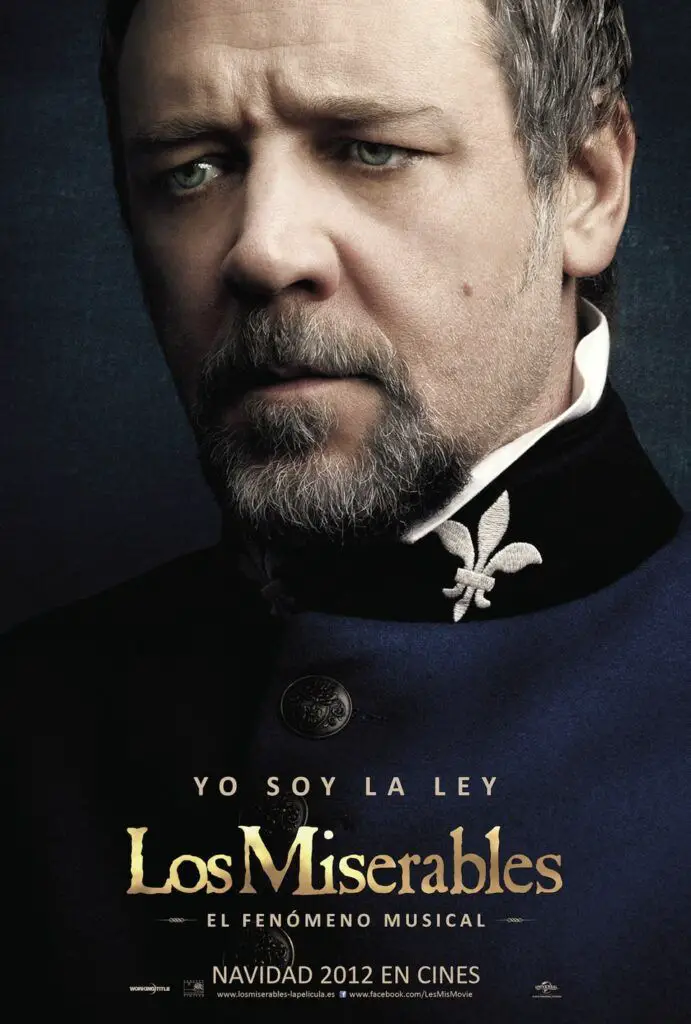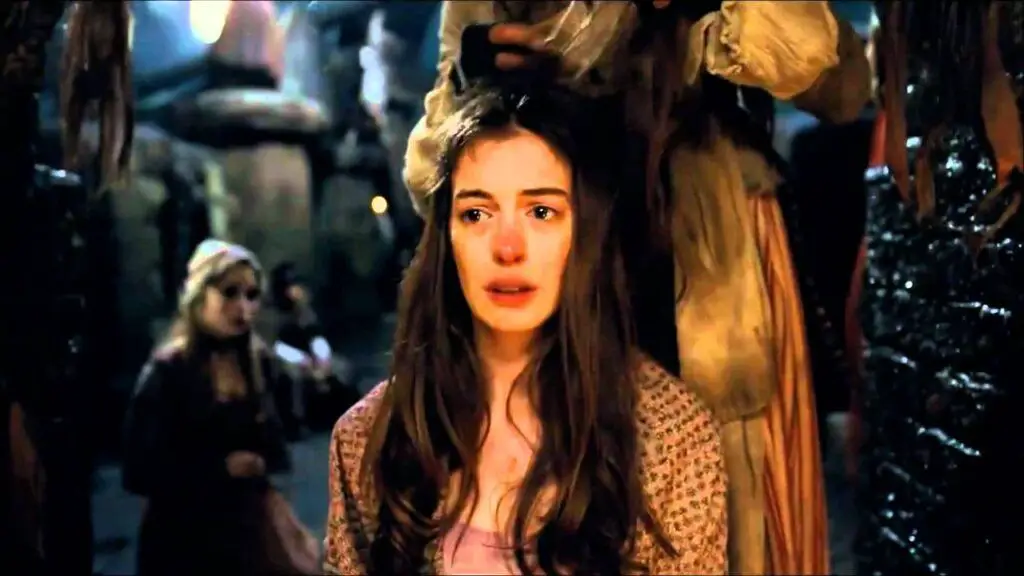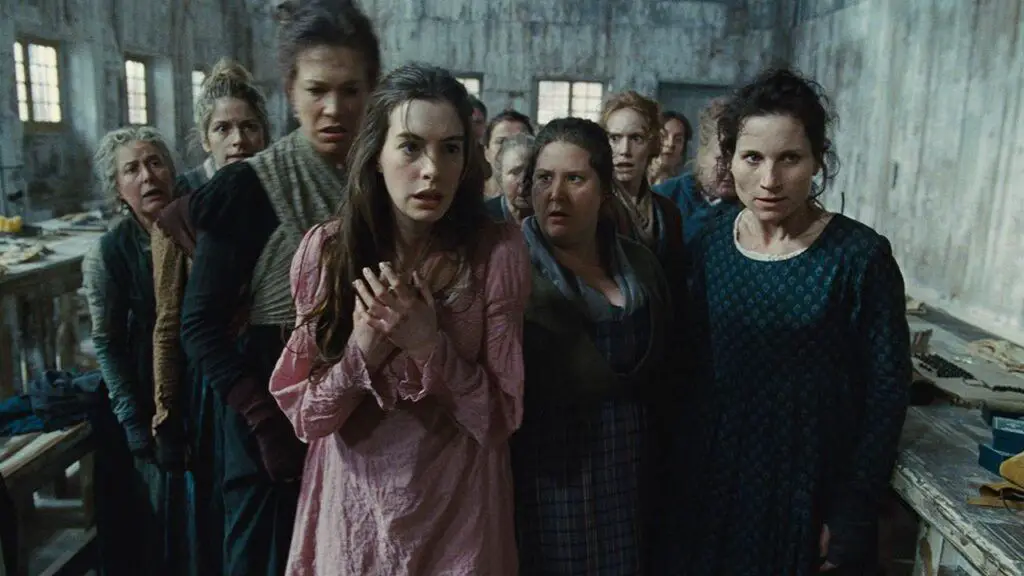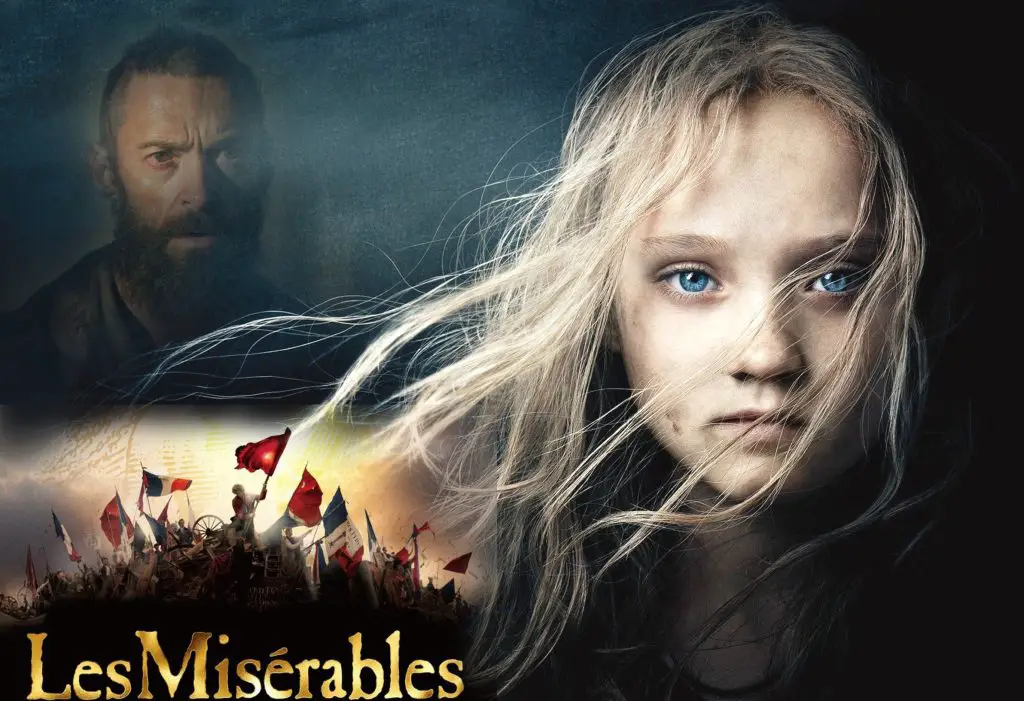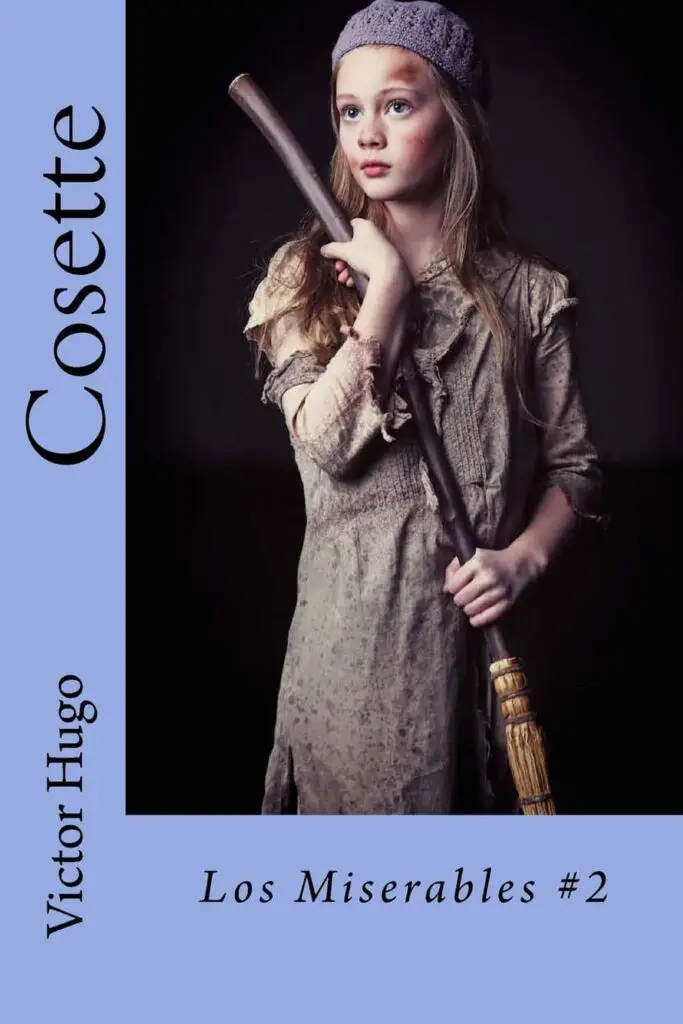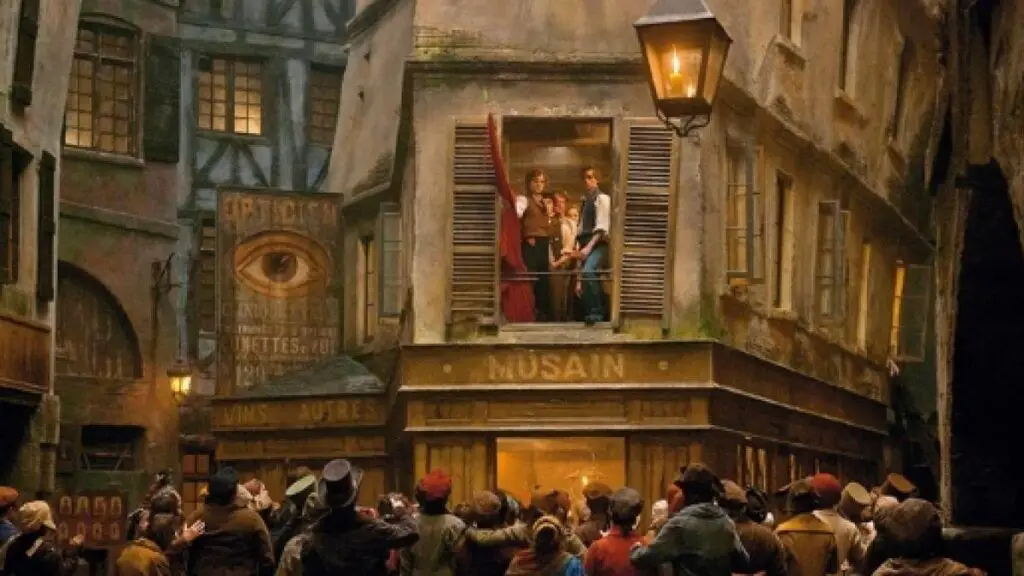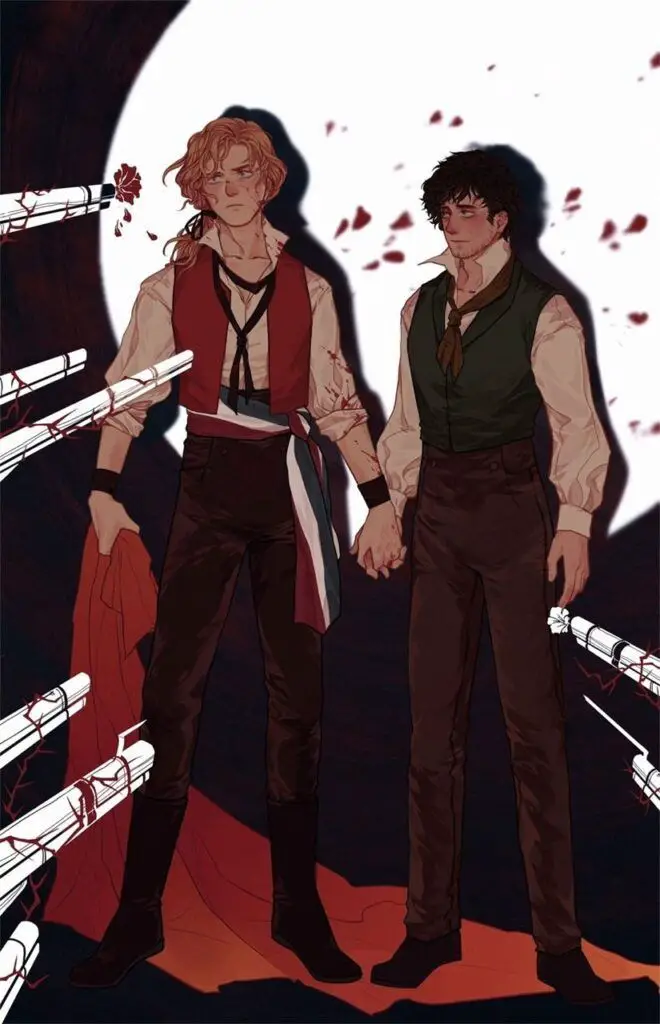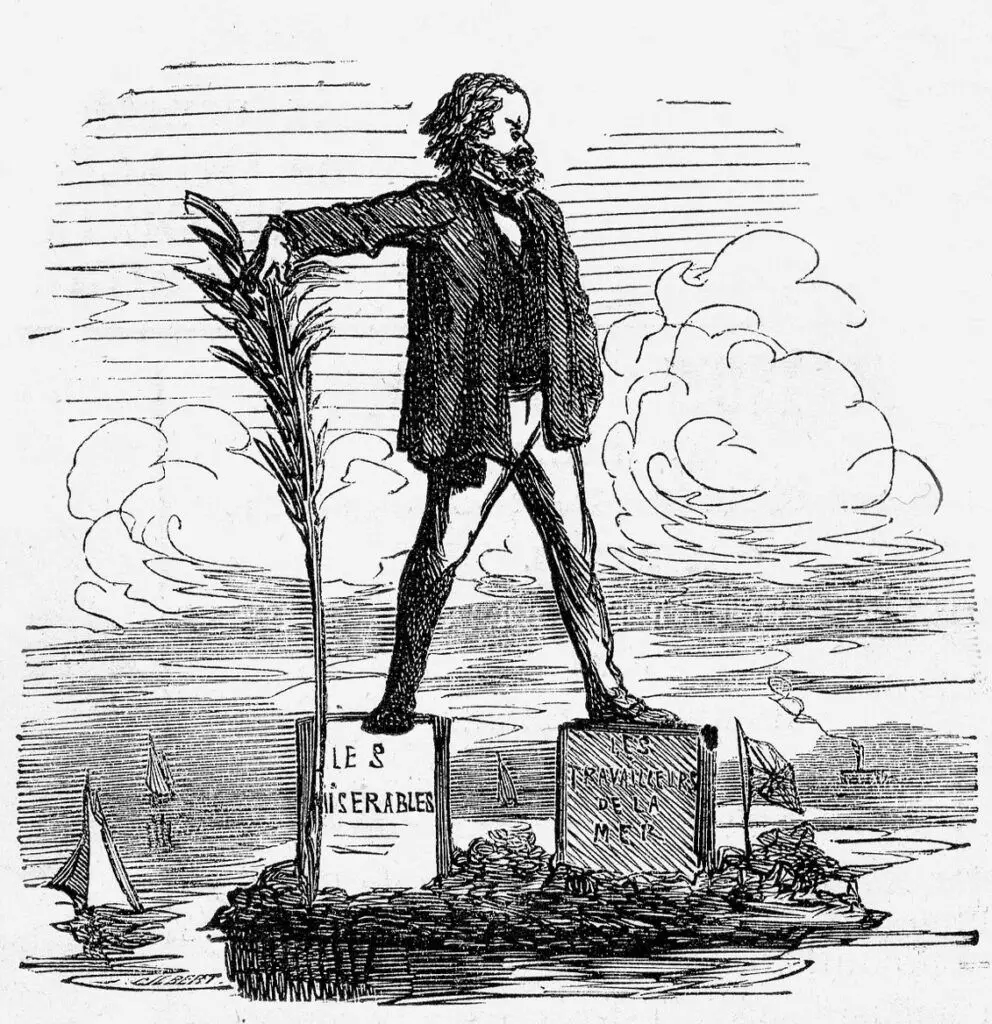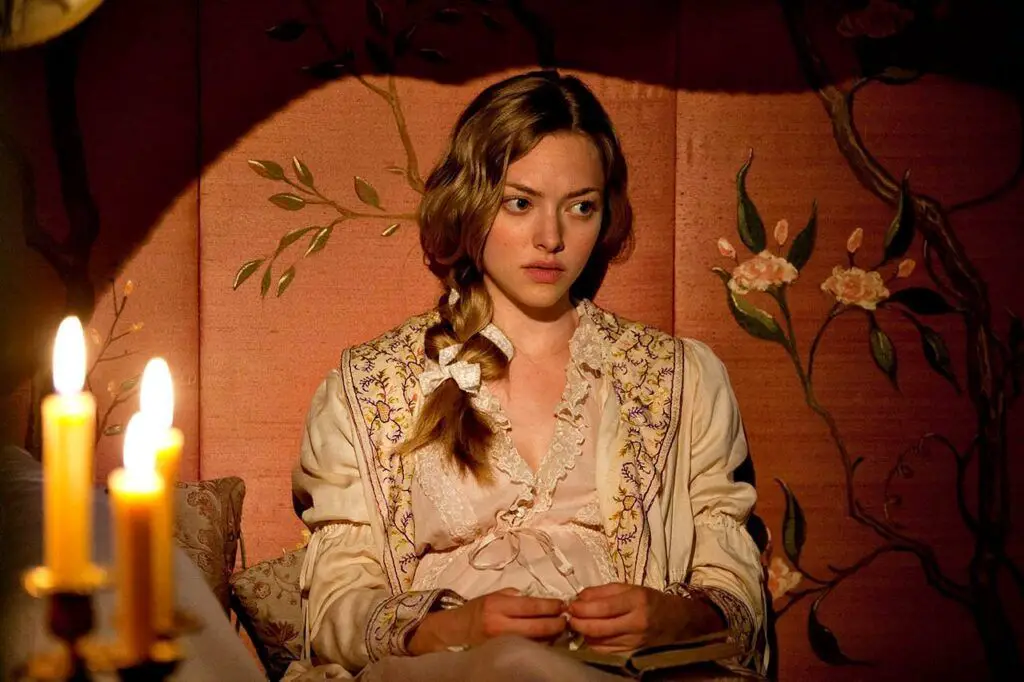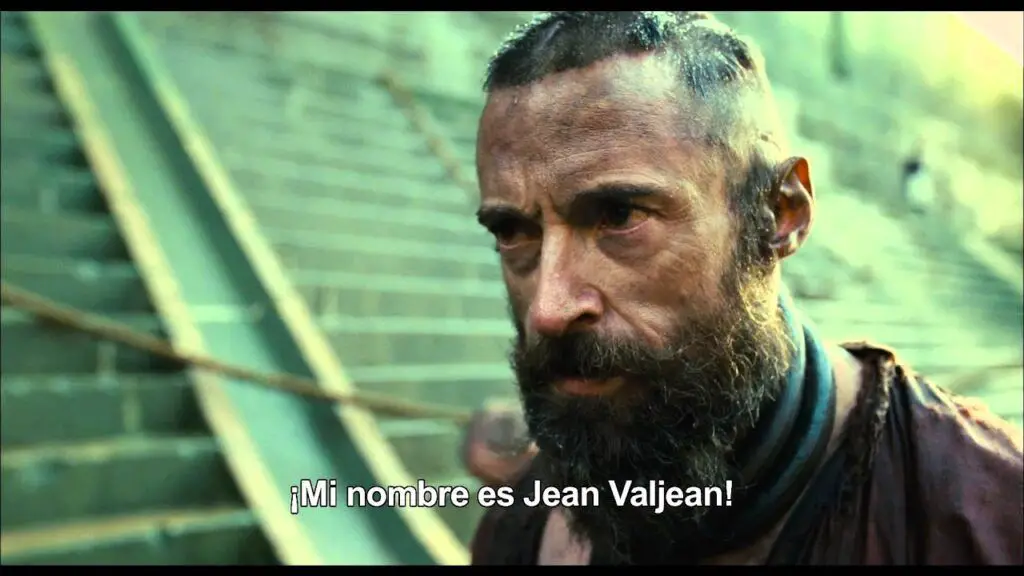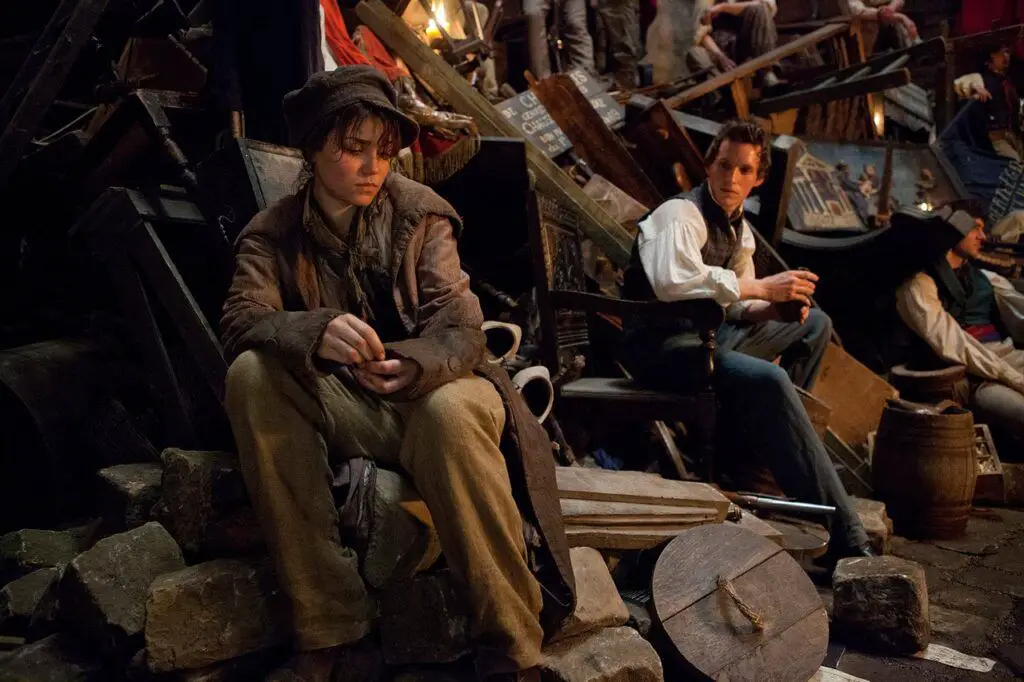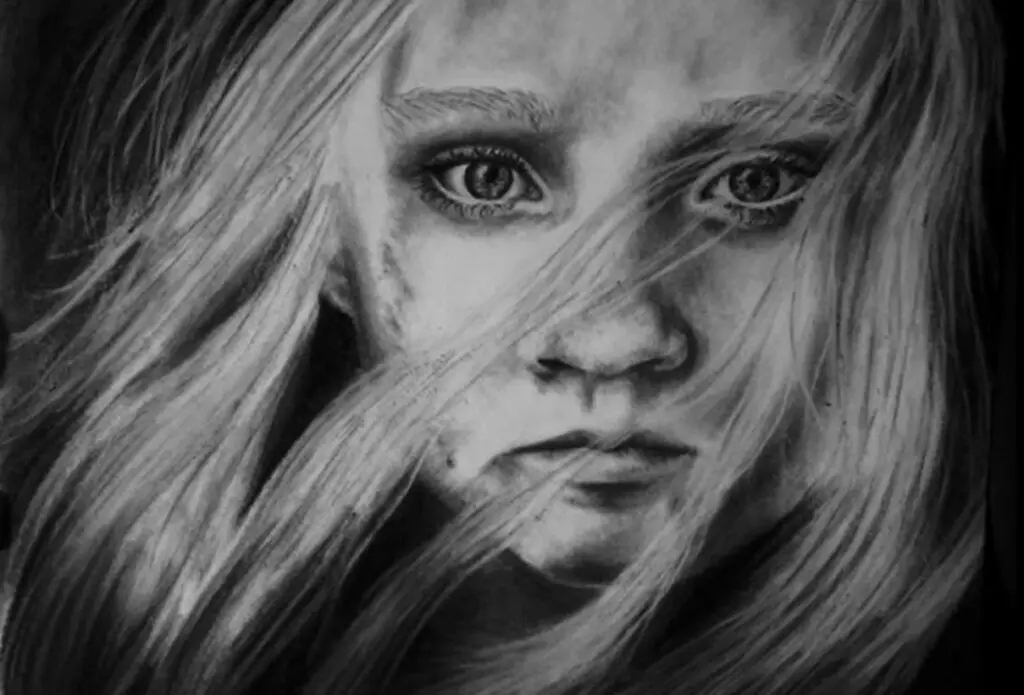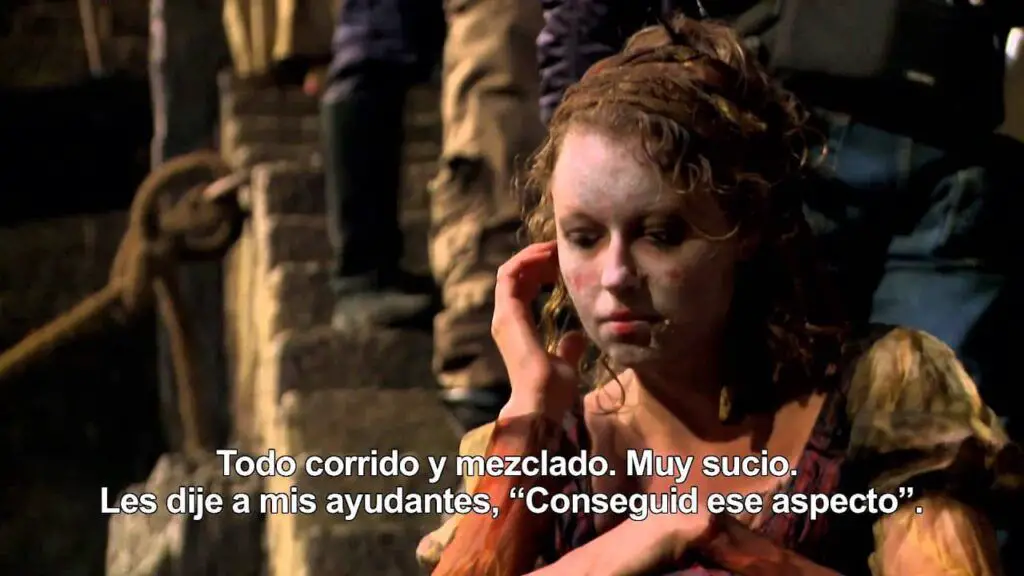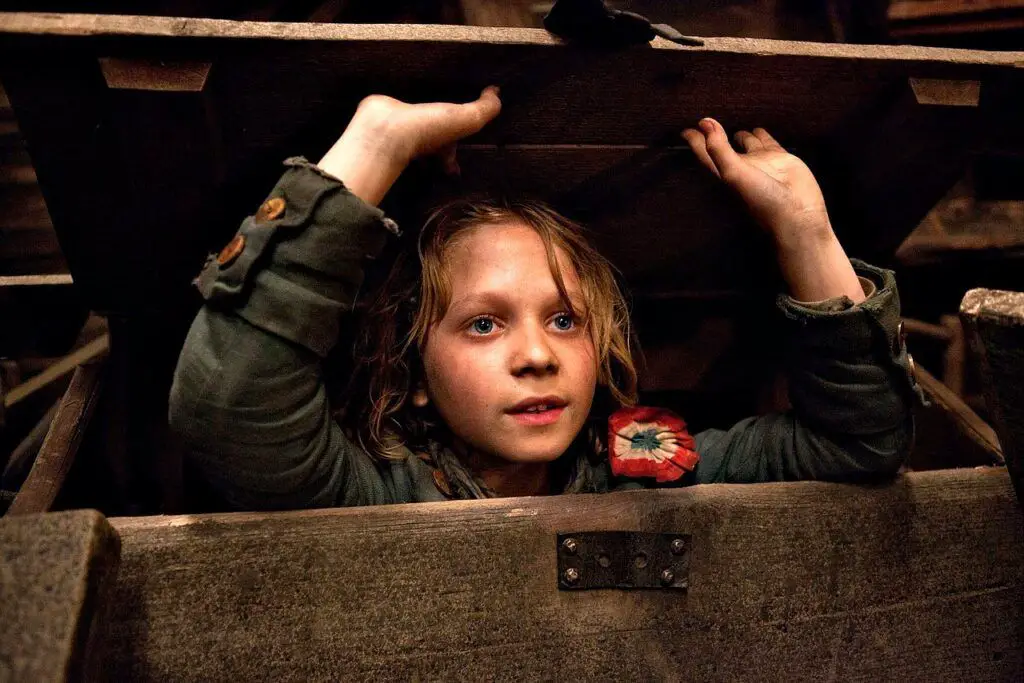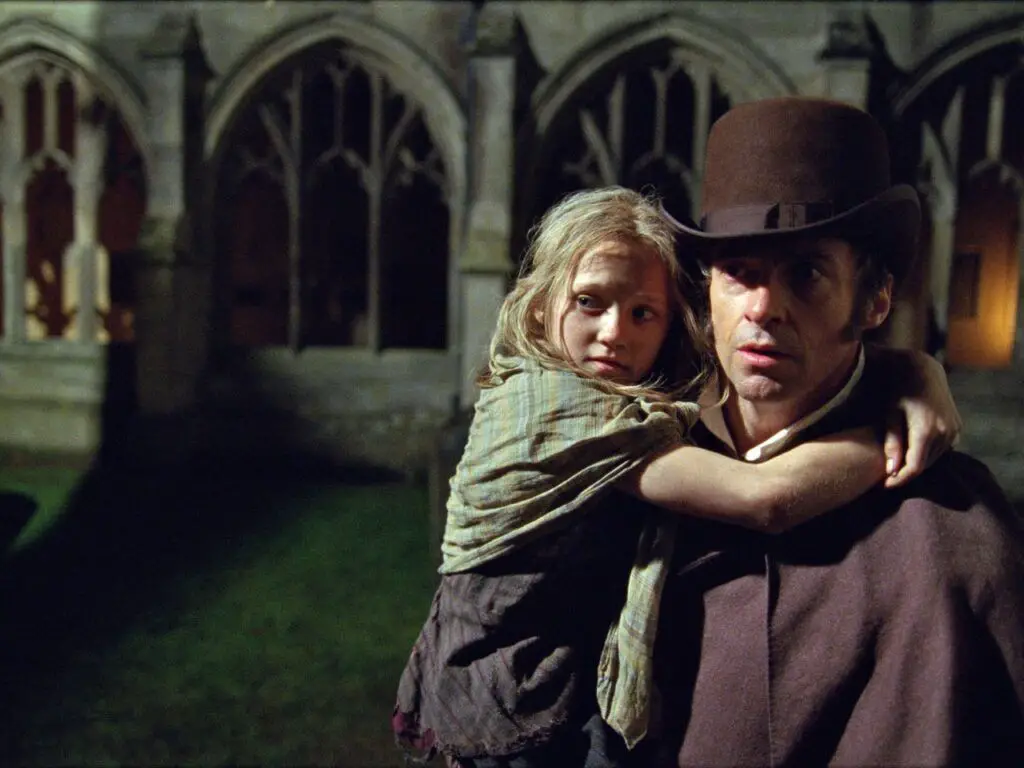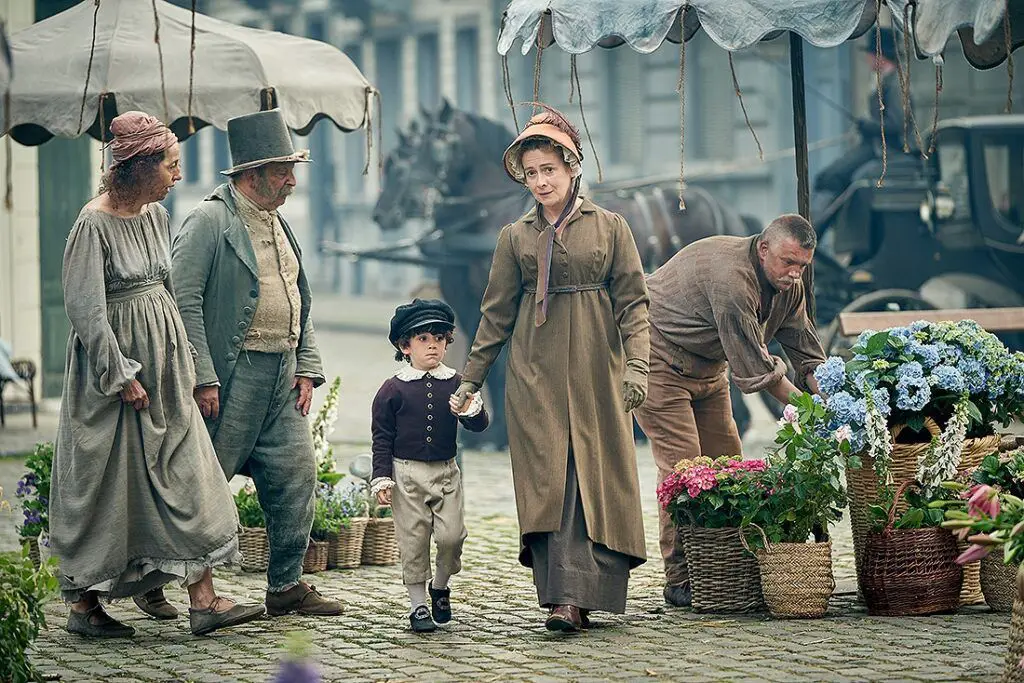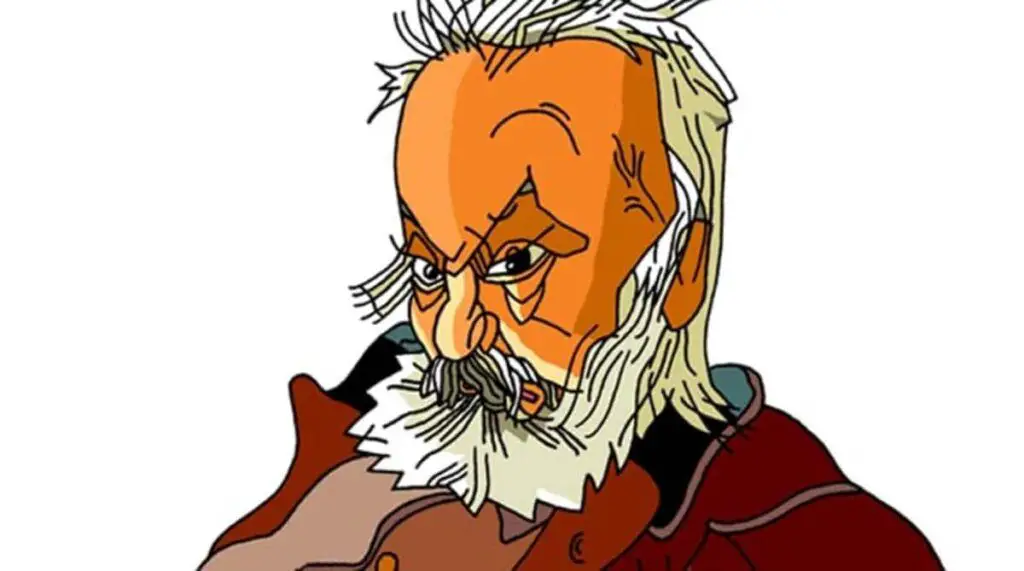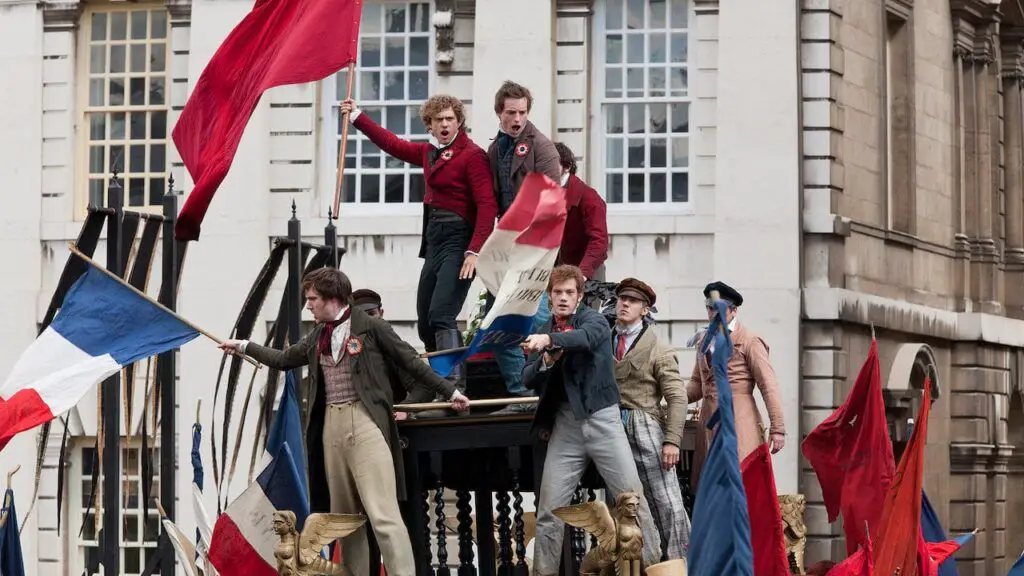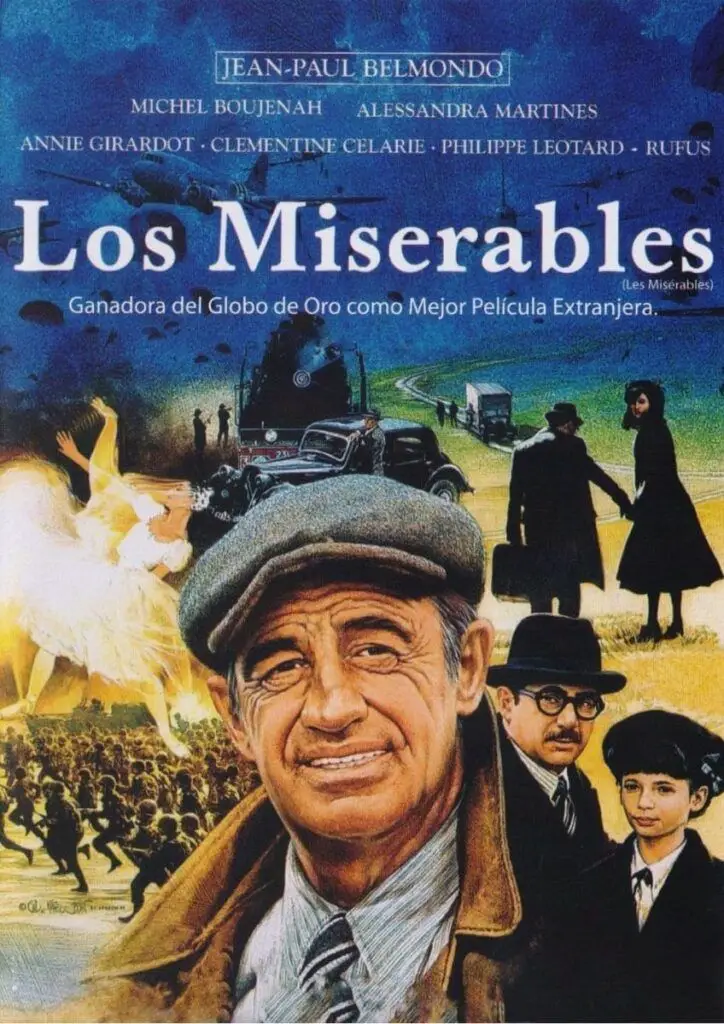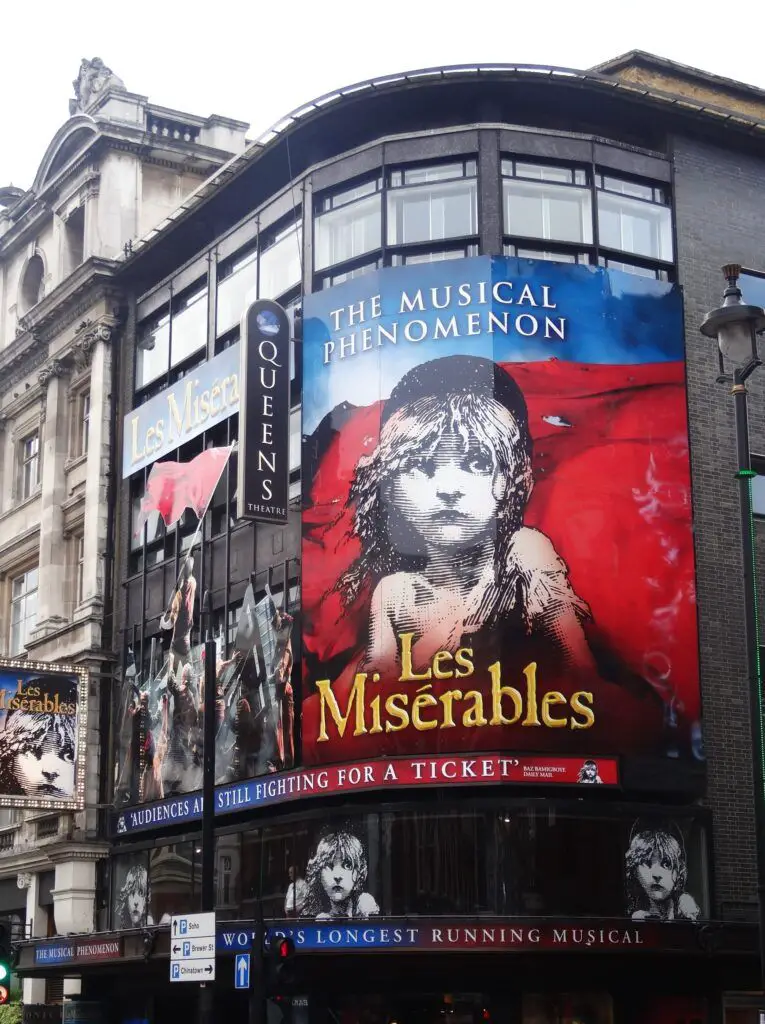In this summary of Les Miserables , a description of the five parts of this work of literature is presented, as well as an analysis of the context of the work, historical moment, and its characters. Its influence on society and literature. I invite you to continue reading and learn about this amazing work.
Indice De Contenido
Summary of Les Miserables
Les Miserables written by the poet Víctor Marie Hugo, is a novel that shows the social and political moment that was being lived in the city of Paris, where the novel was developed. It was published in 1862 and is considered a masterpiece of 19th century literature, as well as the most complete novel of social political criticism.
It is a romantic novel, in which the author was inspired by Vidocq, a French criminal of that time who had redeemed himself and inaugurated the French National Police.
From this basis in the novel arises the dilemma between good and evil. In the novel Victor Hugo recounts how the poorest people in Paris lived in the 19th century. Likewise, he recounts with great mastery the protests of that time that were the beginnings of social transformations.
During the development of the novel Victor Hugo develops the discussion between good and evil, using this argument to broaden his point of view on laws, politics, ethics, justice and religion. For this the plot unfolds in Paris during the June Rebellion in 1832 and subsequent political changes. He also analyzes the stereotypes of the time and presents his opposition to the death penalty.
les miserables summary
It is a historical novel set in Digne les Bains, Montreuil, Montfermeil, and Elefante de la Bastille. The play begins when its protagonist Jean Valjean is sentenced to jail for theft, he manages to escape from prison and his vision of life and society is marked by despair and rage.
However, after his encounter with a person who helps him understand that the acts of life are decided between good and evil, his attitude changes.
Part One Fantine
The meeting between Fantine and Jean Valjean is recounted. The play begins with a long presentation by Bienvenu Myriel, who was the Bishop of Digne, where he lives precariously together with his sister Baptistine and a servant named Magloire. He himself is a modest and disinterested person who lives with what is fair and distributes his surplus among the less favored people.
Bishop and Valjean meet
Bishop Bienvenue meets the protagonist of the novel, Jean Valjean, when he manages to get out of prison in 1815, after having been imprisoned for nineteen years, for having his sentence extended in view of several escape attempts.
His original sentence was five years, for stealing bread to feed his family. Jean Valjean leaves prison disoriented, brutalized and marginalized by society.
Jean Valjean is rejected by French society due to carrying a yellow passport that marks him as an ex-convict.
It is in this situation that thanks to the kindness of Bishop Myriel, he opens the door and offers food and shelter. Valjean accepts the help, but because of his social resentment, he flees through the window of the house carrying some of the Bishop’s silver cutlery.
With such bad luck that the police stop him and take him to Bishop Myriel, so that he can recognize him. However, the Bishop’s attitude was one of protection and he made the policemen see that he had given him the silver cutlery and that he had also given him a pair of silver candlesticks and had left them, thus achieving that Valjean I was not imprisoned this time.
Moments later, the Bishop talks to Valjean and forgives him and gives him the silver candlesticks and asks him to promise that he will heal his life and that he will change to be a good person. However, still with his mind confused, days later Valjean steals a 40-sala coin.
Gervasillo
This coin was dropped by a Savoyard boy named Petit Gervasillo, who was singing and playing with the coins. The boy follows the coin with his eyes and covers it with his foot. In the place there were only the two of them and, with the security of him given by his innocence and ignorance, the boy claims Valjean, who only asked him who he is and ordered him to leave. The boy ends up getting scared and running away.
After a while he regrets his behavior and desperately tries to reach Petit Gervasillo, but he cannot reach him. Aware of her act so low on her, she recalls the bishop’s words «You have promised me to be an honest man. I buy your soul. I free it from the spirit of perversity, and consecrate it to God.»
These words and his internal struggle for having fueled so much hatred during nineteen years in prison, echoed in his head and it was clear that he was «Un Miserable.»
The theft of the child was his last act of evil. After praying and imploring the forgiveness of his soul, Jean Valjean decides to fulfill the promise that Bishop Bienvenue requested of him. To regenerate and transform into a good person.
In the year 1817
Apparently past the time of revolutions, four comrades decide to have fun with their respective lovers, these young men were called Tholomyés, Listolier, Fameuil and Blachevelle. Their respective lovers were: Fantine, called the blonde because of the shine of her hair, Dalia, Zefina and Favorita.
These beautiful young women were workers and flirtatious lovers, which according to Victor Hugo is a fatal combination, due to the decisions they make led by these counselors poverty and coquetry.
So they suffer many setbacks and in turn self-criticism. And wondering if other young women with better resources who do not go hungry and, on the other hand, if they go through hardship.
Fatine was a beautiful young woman whose life had inherited gold and pearls, she wore gold in her abundant hair and pearls in her beautiful teeth.
She was an orphan of father and mother who, an unknown person gave her the first name that occurred to her. She was a beautiful young woman who rose alone in life, she kept herself as pure as she could.
Just as he worked to live, when he met Tholo Miér, he also loved to live. For her it was her great passion but for him only a passing love. Even though due to her modesty she resisted that love for a long time, until the day of a walk through the meadow in it the three couples had a great time, she gave herself to Tholo Miér and pregnant with a girl.
That happy day ended, with the four students saying goodbye to the beautiful girls, and just as they were united by love for these men, the four girls separated and left their friendship. Fantine was very affected because she had been abandoned by the love of her life.
The distractions at work due to falling in love left her badly at work, causing her to be fired and so she went from job to job, with little luck. She barely knew how to read and she had a daughter to take care of her, so she decides to return from Paris to her place of origin. For this she sells all her belongings and pays her few debts.
On that way back, he arrives at the Thénardier inn, seeing the image of two little girls playing in front of its door, watched over by their mother. Fantine told Mrs. Thenardier her sad story, a little modified from her, she told her that she was a worker, her husband had died and she was unemployed, so she went back to her town, looking for better fortune.
The author recounts that Mrs. Thenardier was seated at all times, and perhaps if she had stood up due to her height and robustness, Fatine would have continued on her way. However, the compliment that Fatine made to her daughters, softened the heart of the tavern and for this she treated her well. Making her more human despite her rough and coarse appearance.
The tavern keeper liked how the three girls played and made the comment that they looked like three sisters. This expression penetrated Fantine’s head and makes the lady see that if she allowed the girl to stay she would pay for her care. Well, it’s better for her to get a job. A little reluctantly and taking advantage of the situation, the tavern keeper made a deal with the sad and desperate Fantine.
These Thénardier spouses represent evil in all its extension and transformed the beautiful Cosette into their slave, despite the fact that her mother paid for her care. Just as the innkeeper adored her daughters, she hated Cosette and in this way the daughters who learn from her parents also got used to mistreating the helpless girl.
The owner of the inn, Mr. Thenardier, made everyone believe that he was a veteran hero of the Waterloo war, the reality being that he was a soldier who stole their belongings from fallen soldiers in war and, in one he was stealing, he found with a wounded officer whom he saves out of compassion and remorse. These husbands are the parents of the character Eponine.
mr madeleine
When Valjean decided to change and regenerate himself, he went to another place and arrived in Montfermeil in 1815 and began to use another name Madeleine, and began to work on the industrialization of the invention of that time, an imitation of English jet. Valjean prospered from the idea of substituting shellac for resin in its manufacture.
This small change helped reduce the costs of raw materials, bringing benefits to the producer, the town and the consumer.
Jean Valjean with the passing of the years gets rich working honestly, and is the benefactor of the dispossessed of the city of Montfermeil.
When Jean Valjean arrived in Montfermeil, he earned the appreciation of the police captain and the townspeople, for his attitude towards the violent fire that broke out in the town hall, he managed to rescue the policeman’s two sons from the fire and did not even he thought about applying for his passport and from that moment on the stranger was known by the name of Madeleine.
The citizens of that town admire him and take him to be the Mayor of that city. Mr. Madeleine met Fatine when she returned to her hometown of Montfermeil, she was a single mother working to feed her little daughter Cosette.
While working, Fatine leaves her daughter in the house of some innkeepers, the Thenardiers, but step by step Fatine falls into disgrace, becoming a prostitute until she dies.
In view of the death of Fantine caused by the situation of misery in which she lived, Jean Valjean, intends to take care of the little orphan Cosette, who was cared for by the Thénardiers. It turns out that the Thenardiers were dishonest and very wicked people.
Due to his years in prison, Valjean, now Mr. Madeleine, alienated a police officer, Javert, a police inspector. This character plays justice, he is a closed-minded person and things are not average or shades of gray, they are white or black. This character and Valjean meet again, starting a chase by Javert to return Valjean to prison, as he calls himself now.
During the development of the plot, a peasant named Champmathieu was mistaken by the police, who was caught stealing fruit from an apple tree. This man is mistaken for Jean Valjean and sentenced instead. Knowing about this situation, Valjean, after spending a sleepless night fighting with his conscience, decides to rescue the poor man Champmathieu.
For the author of the novel Valjean, there has been no escape from justice and honesty is a commitment. This time Jean Valjean escapes from justice, thanks to his new social position and Champmathieu is released without really understanding what happened.
After this situation, Jean Valjean left the court and went to the hospital to visit Fatine, who was waiting for him along with his daughter. For Jean Valjean had promised to bring her daughter for her to see. However, due to the matter of the trial he did not look for Cosette, being visiting Fatine, the gendarme Javert arrived
When Javert arrives, Fatine sees him horrified, believing that he is going for her to take her prisoner, but Jean Valjean reassures him and tells him not to worry that the policeman is going for him. The sad and sick woman does not understand this, while Valjean deals with Javert for three days, to go look for Fantine’s daughter at the inn, however the policeman does not allow it, so the poor and sick woman dies without be able to see his daughter. Valjean surrenders.
Second Part Cosette
This second part began with a chronology of the Battle of Waterloo, won by the English, a battle in which the weather seemed to play an important role, and the loss of this Battle was also decisive for the political destiny of Napoleon Bonaparte and consequently France. .
After the war is over, what remains are the wounded and deceased of both armies, and like vultures some men dressed in uniforms go on to plunder the dying, instead of going to battle to fight. They are looters, rogues, traitors. One of these men was peering through the dying, suddenly stopped and saw a hand reaching out with a gold ring.
Wanting to take it, his hand closed and then reopened, so he realized that the man was alive. The officer for the movements to take away his belongings, came out of fainting, opened his eyes, and believing that the looter was saving his life, he seeks to give him something of his belongings. Both Thénardier and the officer Pontmercy introduce themselves.
Happy Javert manages to take Jean Valjean back to jail, once prosecuted he is sentenced to death, but with the king’s approval the sentence is changed to life imprisonment and forced labor for life. His prison was in the military port of Toulon, during his imprisonment, he manages to rescue a sailor trapped in the ship’s rigging.
The villagers observe the entire rescue and encourage him so that everything goes well, when suddenly the convict, once he left the sailor safe and sound, goes towards his gang and falls into the sea. Immediately some boats go out to look for him, but they do not find him and the authorities consider him dead.
Once he has escaped, he goes to fulfill the promise he made to Fatine, to go look for her daughter Cosette, at the Thenardier inn. Arriving at the inn, he realizes the way the family of the innkeeper husbands treat the little girl. Abuse and humiliation, both physical and emotional. In the same way, they let her know that she is a collected girl and that they have not paid her for her care for six months.
Jean Valjean, from the moment he meets the girl, sought to protect her from the miserable Thenardier spouses and makes the decision to adopt her and takes her as if she were his daughter. They travel to the city of Paris as father and daughter and live in poor inns until they reach a convent, where they arrive fleeing from Javert.
Third part. Marius
This third part begins with the presentation of a street child between seven and thirteen years of age, who is compared to a sparrow and an urchin, an innocent child with a good heart. Despite going through problems of poverty and hunger, he is a gentle, generous boy who likes the revolution. This urchin turns out to be the dwarf son of the giant lady, it turns out that his parents are the Thenardier spouses, his name Gavroche.
Mr. Lucas-Espíritu Gillenormand was a ninety-year-old bourgeois. He had two daughters, from two marriages from which he was widowed. The daughter from the first marriage never got married, and the daughter from the second marriage married a colonel who everyone believed had died at the Battle of Waterloo. This second daughter died at 30 years of age. From the marriage of this daughter, Marius was born.
Marius lived in a boarding house where the former innkeepers surnamed Thénardier had ended up living. Marius was a young man with a different way of seeing life, from the vision of his bourgeois grandfather, with revolutionary ideas. The young man’s temperament was enthusiastic, noble, generous, very dignified and pure in heart.
Marius finds out that his father lives and, through the mouth of his grandfather, the mixed feelings for believing that his father did not love him since he had him (according to his belief) when he was little, he did not feel that he loved him. His grandfather has always denied that there was any fraternal relationship between father and children, through the intermediary of the parish priest he finds out that Colonel Pontmercy is very ill.
He came to visit his father but he had just passed away and the wake and burial felt out of place, it was something strange because he had never seen his father. A few days later while attending mass, he meets a man who happens to have known Marius’s father a little and tells him the story of how he was estranged from his son for having participated in the battle of Waterloo.
And that he adored this boy, he would go to see him from afar when his aunt took the boy to mass. He finds out that his father gave up seeing him to protect Marius and not lose his inheritance, from this conversation, the young man decided to investigate the history of the Republic and the Empire in the library. Through beginning to know his father, he learns to know his homeland and begins to form a revolutionary.
Fourth part
Next we will describe the events that occurred during the fourth part of the book, where romance and war are united:
Idyll in Plumet Street and feat in Saint Denis Street
Jean Valjean and Cosette were refugees for a time in the convent and they move to a house with the intention that Cosette gets to know the city. After a few days Cosette and Marius meet, he immediately falls in love with the young woman. Marius moves out of the boarding house where he lived and moves into the house of a fellow politician and even knowing how miserable Mr. Thenardier makes him send 5 francs to his cell every week.
The entire Thenardier family was imprisoned for their crimes and after a while Eponina, the second daughter of the marriage, came out and she seeks to know where Cosette lives at first because some bandits wanted to know where she and Valjean lived, at the request of the old innkeeper to rob him, but Eponina doesn’t help them. However, she tells the address to Marius in love with Cosette.
Marius, after four years without seeing his grandfather, goes in search of him to request his blessing to marry Cosette, but he finds his reluctant grandfather and does not take his love for the young woman seriously, as he advises him to make her his beloved. . In response, Marius replies that just as he made fun of his father, he had also made fun of his wife and left.
Part Five: Jean Valjean
In June 1832 the people of Paris rebelled. During these revolts, the funeral of General Jean Maximilien Lamarque occurs and Marius is wounded for going to help Gavroche. Valjean manages to help the young man and takes him to the house of his grandfather, Mr. Gillenormand. Valjean spares Javert’s life, who had been captured by the insurgents.
Ya viviendo junto Cosette y Marius, para ir apartando a Jean Valjean de la joven luego, que este confiesa que no es el padre de Cosette, Marius no quiere que la siga visitando con tanta frecuencia. Le indica que las visitas sean distanciadas con el objetivo que las visitas sean cada vez más esporádicas hasta llegar el momento que deje de verla.
Al cabo de cierto tiempo la pareja visita a Jean Valjean y lo consiguen enfermo en su lecho de muerte. La joven pareja de enamorados Marius y Cosette le piden su perdón por su comportamiento en los últimos días para con él. Jean Valjean los abraza y perdona, muriendo en este momento.
Análisis de la novela Los Miserables
A continuación se presentará un análisis detallado de la novela:
Período Histórico
The novel recreates the restoration of the monarchy between the years of 1815 and 1848, during his story, Victor Hugo, sets the stage for the revolutions of 1830 and 1848.
It covers the process of industrialization and colonization that took hold during the second empire of Napoleon III. This is also part of the last decades of the 19th century, at the time of the Third Republic.
plot of the work
The author of the novel Victor Hugo approaches the novel taking into account the reality of the time. During the different parts of the novel, reality is presented as a preamble to the moment that is lived while the events experienced by the characters in the novel are narrated. The author sought to criticize society from within.
The author worked on a romantic novel with which he seeks to protest against the bourgeoisie. Likewise, it goes from romanticism to realism intermingling the interest of the characters in nature, for the costumbrista, the regional or the local. In this way the author reflects what was the type of literature that the bourgeois society of the time.
Being a romantic novel, the author plays between reality and the subjective, putting a brake on fantasy and placing the reader in the reality of the time and the characters.
The characters spend their time remembering the past, analyzing their performances and why life treats them that way, being unenthusiastic.
In the play Les Miserables, the social changes that took place in the years following Romanticism are observed, characterized by a transfer of people to the cities looking for a better life, work and food, in response to population growth. The bourgeoisie becomes more conservative.
It is framed in the time that the Industrial Revolution developed in England and that spread to other European countries, at this time there was a development and progress in the populations that opened up to new inventions as well as the progress of commerce and industry. .
Les Miserables Theme
The theme of the novel is about describing the life of a regenerated man and the people he meets after re-entering society.
It is a critique of society and how the place where you grow up and what surrounds you can affect everyone’s life. The work describes the social injustice, the opportunities that some had, the political and industrial changes of France in the 19th century.
It is a study of people, their temperaments, their anxieties, social decadence, their search for a better quality of life, their dreams held back by brutal reality. Showing the decline of poverty in the nineteenth century and how they emerge through this harsh reality, good-hearted characters who, if followed, transform people’s lives and achieve peace and love in the soul.
Historic context
Victor Hugo introduces the reader to each part of the novel, describing the social and political situation of the time. He narrated how it affected the loss of the Battle of Waterloo that took place between June 15 and 18, 1815 and the loss of the Napoleonic empire. Like the extreme poverty that those people experienced in those times of war, it brought out the most miserable in their personality.
It also narrates how poverty affected another group of people and motivated them to get ahead, work as a team, train, become fighters for better social welfare, led them to the emergence of new and better proposals to obtain social improvement.
During the development of the novel, the author narrates and describes the historical, social, political and economic moments that the characters lived and that affected the lives of all of them. Describes the fall of Napoleon and the Napoleonic empire, the battle of Waterloo, the Restoration, narrates the characteristics of the time of Louis XVIII, Charles X and the July revolution, which allowed Louis Philippe d’Orleans to power.
It narrates how a conservative bourgeoisie (is in good socioeconomic conditions) that does not want changes, however, society is undergoing political transformations that affect everyone. It is touched sideways as is the relationship of man and woman is a macho society.
It is observed how the man influences and decides the life of the whole family, these are rude and in those with little education they mistreat women with verbal and physical abuse. Women were under his influence, they were generally delicate, hard-working and male-dominated.
In this social disaster, the population experienced great poverty, especially people with fewer resources who suffered hardship, physical abuse, prejudice among themselves, emotional and affective lack. The bourgeoisie was experiencing political discontent. During the development of the novel the author goes through these moments and also presents the happy moments of the town.
Previous literary works
The author of the novel Victor Hugo was a sensitive person with social justice and the dignity of human beings. This led him to write different works where he expressed his critical point of view against social injustices. In 1829 he wrote «The last day of a condemned», this work is a long monologue and questioning of the death penalty.
Claude Gueux wrote in 1834. In the year 1845, he was appointed by King Felipe I, as «peer of France», simultaneous to this appointment the painter Francois-Auguste-Biard found his wife Léonie in the act of adultery with a poet. This woman was taken to the Saint-Lazare prison for a period of two months and then transferred to the Augustinian convent.
This social episode, according to the historian of Victor Hugo, Sainte-Beuve, led the author to sketch the outline of a draft with the title of Les Miséres, retired at home, he began to write paragraphs describing the main character, which according to that sketch would have the name of «Jean Trejean».
Also from that same year 1845, there is a sketch of the different parts that the novel would have, it had four parts: Story of a saint, Story of a man, Story of a woman, Story of a doll.
While working on the novel, he apparently took a hiatus of about a year in 1848 and 1849, in which he wrote his speech «Discours sur la misére» (Discourse on Poverty, published in 1849).
Following his retirement he wrote at that time «Contemplations» in the year 1856 and «La Légende des siécles» in the year 1859.
After finishing these works, he set out while in Guernsey in the year 1860 to write «Les Miserables». On the cover of the manuscript he wrote the note: February 14. From here the pair of France stops, and gives way to the outlaw to continue: March 30, 1860. Guernsey.
This novel was completed writing and was published by the publisher Albert Lacroix at the end of March 1862, this publisher invested a large budget in the first edition of the novel, for its production and launch. He let it be known that he had pinned all his hopes on this novel by Victor Hugo.
What was Victor Hugo inspired by?
It is a realistic novel that narrates the human miseries, their affective deficiencies, food, money and misfortunes of the poor of the time. In which the historical moment that France and its capital Paris lived beginning in the 19th century is described. The success of the novel Les Miserables may be due to the detailed description of its characters.
It is a romantic novel, because it is inspired by the love for the human being and narrates how detachment from the material can help a man to extend his vision towards his neighbor and help him to get out of the misfortune of his mind and therefore of his life. This is read at the beginning of the novel when describing the way in which Monsignor Myriel conceives life.
Monsignor Myriel, a man who, due to his position in the Church, enjoyed a good social and economic position. He lived according to his convictions and by his example showed God’s love for human beings. With this love, he helps people improve their lives, as happened to Jean Valjean, who is regenerated thanks to Monsignor Myriel’s words.
It is a romantic novel that believes in self-love, narrating how a person can regenerate and rethink their life. By wanting to keep the word given and the commitment to fulfill a promise made. What is it that helped transform Jean Valjean’s life, when he questions himself, after the mistreatment of the Jarbarcillo child, and realizes that he was a miserable person.
It is a call to optimism, because it makes us see that if we put our minds to it, human beings can live taking out the best of our essence every day, leading to making more accurate decisions and leading to a better quality of life.
Quality of life that can be extended to other people, if you look at life in abundance and without fear, sharing with other human beings the achievements obtained.
As well as the internal struggle that Javert has due to his doubt of fulfilling justice without contemplation. From compliance with the law without an iota of analysis of the real situation regardless of why the person breaks the law, then as he experiences certain situations with the inmate who has sought him out the most, Jean Valjean helps him save his life and begins he to question himself and becomes more flexible.
This romantic novel describes the love between lovers, the reciprocated love of Marius and Cosette, the disappointed love and the love of a mother that Fatine lives, the first one transforms her from a beautiful, hard-working and a little immature woman to one transformed by the care of his daughter, all her life and beauty as long as Cosette is well and a father, as Jean Valjean comes to feel for Cosette, once he rescues her and gives her a good education.
It is an epic novel, because while describing the situations that the characters go through. It narrates great events of the years in which the plot unfolds, such as the Battle of Waterloo and the end of the Napoleonic era. The riots in Paris in June 1832, as well as the crossing through the Parisian sewers by Jean Valjean.
The motivation of the author of the novel, is to criticize the social situation that then the French country. He wrote the novel while in exile and he wrote to his friends in France so that they could send them the names of the streets, and verify if the corners that he describes in the novels are true, in the novel the author’s love for those places is reflected Parisians and their memories of the experiences experienced.
Victor Hugo is a critic of society, of that poverty, indifference, the repression of the system, social disintegration that leads some people to live miserably. The author shows his vision in the narrative about how education, respect for human beings and collaboration among men are the ways in which human beings can face the social system of the time and not become infamous beings. .
During the development of the novel, the author questions the French judicial system, for the mistreatment and cruelty towards human beings and the death penalty for people who according to the laws are guilty and in reality are innocent, but the fact of not knowing how to defend themselves makes them weak.
Apparently the French author Victor Hugo, since he was a child, knew cases of people who sentenced them with the death penalty. As a young boy he saw bodies hung up for people to see and learn to respect the law. Already as an adult he saw executions by guillotine. For these reasons, one of the themes that the novel touches on are «crimes of the law.»
En la novela Los Miserables se muestra como el maltrato y coacciones sociales y morales podían transformar a los hombres en seres degradados con poca fuerza espiritual y moral para poder superar estas condenas sociales. El autor hace ver que cree con la ayuda entre los mismos seres humanos se puede, dar un giro a esta situación y devolver la confianza del hombre en sí mismo.
Por esta manera de pensar en su obra Los Miserables, inicia la historia de estas personas que tienen sus problemas y vivencias y a través del personaje Jean Valjean, muestra cómo el amor entre los seres humanos, la confianza hacia el prójimo ayuda a la regeneración y recuperación de los hombres. Por consiguiente de la sociedad. A través del Valjean muestra cómo cree él que los hombres pueden vivir mejor.
Se nota la diferencia sobre la vida de un hombre regenerado y en pro del bienestar de los seres humanos como lo muestra en los personajes del Monseñor Myriel y Jean Valjean, este último resultado de la creencia de un ser humano por otro ser humano.
En cambio los otros personajes de la novela encarnan la “explotación del hombre por el hombre”. Víctor Hugo, busca que la humanidad entienda que hay que seguir trabajando por tiempos mejores.
Posibles influencias
En los análisis realizados a esta novela los críticos Robert Laffont y Valentino Bompiani consideraron que la obra literaria de Víctor Hugo fue influenciada por los libros “La comedia humana” de Balzac y “Los misterios de París” de Eugéne Sue, además por los folletines.
Esa influencia que se observa en la obra de Víctor Hugo de los textos de la obra de Balzac, es un elemento que señalan diferentes analistas de ambos escritores.
De acuerdo a estos en reiterada ocasiones en el libro “Los Miserables”, el autor se refiere directamente al universo de Balzac. Ambos escritores intercambiaron opiniones en diversas oportunidades por ser contemporáneos.
Se observan muchas similitudes entre los personajes de la novela “Los Miserables” como el Monseñor Myriel se asemeja con personajes de obras literarias “El cura de pueblo”. El protagonista Jean Valjean, tiene similitud con Vautrin, en comparación entre ambos Valjean es el reverso positivo de Vautrin.
En referencia a las costumbres y vivencias de los condenados se parece mucho a lo escrito en “Esplendores y miserias de las cortesanas”, en este análisis de los textos de ambos autores, los críticos hacen referencia a la influencia del escrito Balzac, en la representación del convicto en “Los Miserables”, parecido a Farra Vesche, que es un personaje de Balzac.
Al parecer el autor Víctor Hugo, toma referencia de las novelas folletinescas publicadas entre 1842-1843, por sus retratos de los bajos fondos parisinos, también el autor tomó ideas de los folletines cuando ataca la injusticia social. Así como hubo influencia de estos folletines, la vida real también fue tomada en cuenta al escribir “Los Miserables”.
Because of this disagreement with the power of the ruling state and the censorship that it imposed on the press, he did not want his novel to be a serial publication, edited in serial format.
For all this, he demanded that his novel be published in an economical format so that more people would read it due to the accessibility of its price. However, in 1888 the novel «Les Miserables» was published in serial format in Le Rappel.
The author began to write down facts of French daily life, in his notebook. For example, what was written down on February 22, 1846, wrote about the experience lived by a poor man who was imprisoned by two gendarmes because they accused him of stealing bread, Victor Hugo when he made an estimate of this fact, he meant that this man for him, it was the specter of misery, and what inspired the character of the protagonist of “Les Miserables”.
He observed a fight between an old woman and a boy which perhaps led him to think of Gavroche. Fantine’s character may have been inspired by a young woman, whom she defended from the police in 1841, when they took her prisoner, unjustly accusing her with the threat of imprisoning her for six months.
Victor Hugo also made a trip to visit the Conciergerie in Paris in 1846 and Waterloo. He let his son Francois-Victor know that he was in Waterloo, with the purpose of knowing from the direct source what he would write in the novel about the battle and, really, to be as truthful and close to reality as possible. happened.
During this visit he sought information on industries, wages, and cost of living for the poor and on convent life, aided by his mistresses Léonie d’Aunet and Juliette Drouet. The author is inspired to write his novel in figures of his time to take an example to develop his characters.
Los personajes opuestos de Jean Valjean y Javert al parecer se inspiraron en las Memorias de Vidocq en 1828, que fue un personaje de la vida pública parisina y que fue la fuente de inspiración, de personaje Vautrin de la novela de Balzac. Este hombre público fue un ex policía.
Vidocq, había sido policía que fue puesto preso y se regeneró. Según sus cronistas, Víctor Hugo lo tomó como referencia para desarrollar sus personajes, para el personaje de Jean Valjean se inspiró en el Vidocq ex convicto. Asimismo, Javert fue inspirado en Vidocq como jefe de seguridad de la jefatura de Policía.
Estas conclusiones e influencia de Vidocq, no fueron reconocidas por Víctor Hugo para la creación de estos personajes de la novela.
Apparently in the development of the text of the novel he used reference from his private life to write his narration of the novel. This is the case of his lovers: Juliette Drouet who used it for the name of the mother superior of the Convent of the Daughters of God, «mother of the angels Mlle Drouet».
For Blaru’s ordeal, she took the pseudonym Thérese de Blaru, the pseudonym of Léonie d’Aunet, signed her books. A more private piece of information was the date of February 16, 1833, which in the novel was the date of the wedding of Cosette and Marius, and in reality was the date on which Juliette Drouet and Victor Hugo were together for the first time.
Characters in the novel
A description is made of the main characters of the novel that appear simultaneously in the narration of Jean Valjean’s life, living the same situation or at another time. They are presented as main and secondary characters.
Jean Valjean.
This character is the protagonist of the novel and depending on the circumstances he changed his name several times, such as: Monsieur Madeleine, Ultime Fauchelevent, Monsieur Leblanc and Urbain Fabre. The story of this man is told from the moment he escapes from prison.
He was convicted of stealing a loaf of bread to feed his sister’s seven children, who were starving. The initial sentence was 5 years, but for trying to flee four times, they added 12 years to his sentence and for resisting during the second escape, they added 2 more years to his sentence.
Upon leaving prison, he is marginalized for having a yellow passport that indicates his status as an ex-convict. While he walks the streets, resentful and hungry because they don’t want to give him a job, he meets Bishop Myriel, shows him mercy, and allows him to spend the night and gives him food, despite being an ex-convict.
During a conversation between this man and the bishop, he induces him to change his life and regenerate. He continued on his way, and as he thought about what the bishop said. However, while he was in these musings he came across a child who dropped a 40-saler coin, which Valjean covered with his foot.
After a while of stealing and threatening the boy who claimed his coin. She looked for him but the boy was already gone. Reflecting on what he had done, he considered himself a miserable person for stealing a child. And, with the bishop’s words in his head, he decided to fulfill his promise and regenerate.
He decides to go to another place and when he arrived in a town, a fire was taking place and without thinking he saved the lives of the children of the town policeman. He stayed in that town and took the opportunity to change his name to Monsieur Madeleine and regenerate his life. By introducing new manufacturing techniques he succeeded in making the factory prosper, enrich himself and help the townspeople. This led him to be mayor.
He turns himself in to justice to prevent an innocent man from going to jail because he was mistaken for him. He becomes captured again by the policeman Javert in Paris, at the time Fatine is on his deathbed. He breaks out of prison again and fulfills his promise to Fatine to rescue her daughter Cosette from the Thénardiers.
Thanks to the help of people grateful for his help when he called himself Monsieur Madeleine, he managed to escape and live for five years as a refugee in a convent. He manages to save Marius from being arrested and also from being killed on the barricades built in Paris during the protests.
Later, at the wedding of Marius and Cosette, he reveals his true identity to them. For this reason, Marius distances Cosette from his presence and it is until the time of his illness that the couple visits him and dies. Jean Valjean was a man who, thanks to the help of a good man, learns the difference between good and evil, to believe in himself and keep his word to regenerate and keeps Fatine’s word and rescues his daughter Cosette.
Gendarme Javert
He is a gendarme with a very closed and strict mentality in compliance with the law, which does not allow him to doubt for a moment whether he is right to capture someone even innocent and take him to prison, for the simple fact of having fulfilled his duty. He is a character obsessed with capturing fugitive Jean Valjean.
Javert was born in prison, his father was a prisoner and his mother a reader of the hand to tell fortunes. Javert quits his parents and works at the prison as a security guard.
During his work in the prison he meets Jean Valjean, he was a supervisor of the group of prisoners in which the aforementioned Valjean was, therefore he knew his appearance and his strength.
Javert con el tiempo cambia de trabajo y pasa a ser gendarme de una jefatura en otra ciudad, que llaman M__-sur- M__. Por su trabajo como prostituta captura a Fatine y por este motivo se le enfrenta el señor Madeleine (Valjean), quien era dueño de una fábrica y, este le ordena que la libere. Con este encuentro empieza a darle vuelta a sus recuerdos para saber dónde ha visto a ese señor Madeleine.
Javert, molesto por el desaire empieza a buscar venganza contra el señor Madeleine, en esto reconoce el rostro de Valjean que se está haciendo pasar por Madeline. Javert se lo hace saber al jefe de la policía y, este le hace saber que está equivocado, porque acaban de poner preso un hombre que presuntamente es Valjean.
Resulta que cuando llevan a juicio al presunto Valjean, el señor Madeline, por su influencia le permiten entrar al juicio y, siendo el verdadero Jean Valjean se entregó para salvar de la cárcel y este quedó en libertad. Javert se llevó preso a Valjean, quien se escapa. El gendarme Javert es promocionado a la fuerza policial de París y es en esta ciudad dónde lo pone de nuevo preso.
De nuevo Valjean se escapa y, Javert pasado más de cinco años casi lo vuelve a capturar en la casa Gorbeau en el momento que captura a la familia Thénardier y a Patron-Minette.
Durante las revueltas, Javert se infiltra en las barricadas de los protestantes y es descubierto. Valjean que forma parte de los protestantes finge que ejecuta a Javert pero le perdona la vida.
Valjean escapes through the sewers and Javert discovers him when he is coming out of them. He captures him and allows him to go to his house for a moment to report on the situation and the gendarme then leaves and sets him free. Javert the policeman tries to reconcile his fervor for the law with his new view of the immorality of law enforcement at the time.
He decides to write a letter to the chief of police raising the situation of degradation that exists in the prisons, the precariousness in which the prisons are and about the abuse and vexation of the guards towards the convicts. After this he commits suicide in the Seine river.
Cosette «the lark»
Her real name was Eufrasia (Euphrasia), but her mother liked to call her Cosette better and in the town where she grew up they called her «the lark». Later when she was rescued by Jean Valjean she was known by the name of Mademoiselle Lanoire, Ursula. She was the memory of the relationship between Fatine and Tholomyés, therefore her illegitimate daughter.
Her mother Fatine, for not being able to take care of her, leaves her in the care of a married couple who were innkeepers, between the ages of 3 and 8. This couple were insensitive characters who did not love her and made her her slave. Because of a promise Valjean made to her mother, Fatine de ella on her deathbed rescues Cosette from the miserable Thénardiers.
Once rescued, he takes care of her as if she were his own daughter, educating herself in the convent where they were hidden for five years in Paris. While Cosette takes care of her, she recovers with her care and transforms into a beautiful young girl. She falls in love with Marius Pontmercy and they marry near the end of the novel.
fatine
A beautiful young provincial woman who grew up alone because she had no family and, living in Paris, worked as a worker. She was the lover of Felix Tholomyés, who abandoned her without knowing that she was pregnant. Unable to care for her, ella Fatine left her daughter Cosette with the Thénardier tavern keepers in the village of Montfermeil.
The Mme. Thénardier loved her two older daughters very much, but he mistreated Cosette, treating her like her slave. Later, Fatine gets a job in Monsieur Madeleine’s factory and since she could neither read nor write, she asks others to write and read the letters she exchanges with the Thenardier spouses.
Because of her status as a single mother, she is fired from the factory. In order to send money to the innkeepers who take care of her little Cosette she sells her precious treasures her golden hair and her incisor teeth that were her pearls. She until she for lack of money she prostitutes herself.
Already sick, a man abused her by insulting her and throwing a snowball at her back. Javert arrests her and Valjean confronts the policeman Javert, for Fatine knowing of her plight and sends her to a hospital.
Valjean goes to visit Fatine at the hospital and Javert arrives, both men confront each other and Fatine dies disheartened to find out that Valjean is a prisoner and has not looked for his daughter Cosette.
Marius (Gillenormand) Pontmercy
Grandson of the monarchist Monsieur Gillenormand, after discovering that a Napoleonic officer had been separated from his father, who meets him when he has just died and discovers that his father, in order to prevent his grandfather from disinheriting him, withdraws from his life. But she was always looking out for him.
Marius studied law and was briefly associated with the Friends of the ABC. He shares his late father’s political views and begins to have a distant relationship with his bourgeois grandfather, Monsieur Gillenormand. He meets Cosette when she and her putative father leave the convent and falls in love with her.
He joins the fight at the barricades, believing that Cosette had gone to London with Valjean. He is wounded at the barricades and saved by Valjean. He manages to marry Cosette. For a time he wanted to pay a debt of gratitude from his father to Thenardier, but realizing that he is a swindler, he pays for his trip so that he leaves France.
Eponine Thenardier
She was the eldest daughter of the Thénardiers. She was she along with her sister very pampered by her parents, when she reached adolescence she ended up being a frivolous, street urchin. Her parents, when they went to the city of Paris, became bandits and she helps them. She became a swindler to earn money.
She falls in love with Marius and, without knowing it, he asks her to get Valjean and Cosette’s address, knowing that her love for him is impossible, very sad she takes him to Cosette’s house. She hid her parents and her bandit gang Patron-Minette and Brujon, from robbing the house on a visit from Marius to see Cosette.
He disguises himself as a boy to convince Marius to participate in the barricades, with the purpose of both dying during the protests. Seeking to save Marius’s life he tried to prevent a bullet from reaching the boy, they mortally wound her and the bullet wounds her hand and her back.
Already dying, Éponine confesses to Marius and hands him a letter from Cosette. She asks him to kiss her on the forehead when she dies. When she dies, the young man fulfills her request for her, pity for the life she led.
The Thenardiers
A couple of plumbers posed as the Jondrettes, M. Fantou, M. Thénard. This marriage had five children: two Eponina and Azelma girls and three Gavroche boys and two smaller ones. These innkeepers extort money from Fantine for more and more money for Cosette’s support.
These innkeepers are a couple with bad feelings and exploit little Cosette, to serve them, until Valjean came to rescue the girl.
He closes the tavern due to debts and they go to Paris where they change their name to Jondrette and come to live in a boarding house called Gorbeau, and they are Marius’s roommates.
The tavern Thénardier or Jondrette is in league with a criminal group known as «the Patron-Minettes» and together with them they plan to rob Valjean and this robbery is foiled by his roommate Marius.
He informs the gendarme Javert of the intentions of the innkeeper and his cronies, the policeman foils the robbery and takes the whole family to jail.
During his imprisonment the tavern keeper, Marius sends him a 5 franc coin every week, as a way of fulfilling his father’s promise of gratitude. Madame Thenardier dies in prison, and her husband tries to bribe Marius by telling him about Valjean’s past. To get rid of him, Marius pays him to leave France. He goes to the United States and becomes a slave trader.
Enjolras
He is the leader of the Friends of the ABC who directs the uprising of the city of Paris. He was executed by the National Guardsmen, along with Grantaire after the barricades fell. Enjolras was a leader totally committed to republican values and the progress of the country.
Gavroche the rascal
He was the third son of the Thenardier spouses and the eldest of the three boys of this unscrupulous couple. He was a child like his two little brothers, not loved by his parents. He ended up going to live on the street. By circumstance of life he finds without knowing who they are, his younger brothers, taking care of them for a little while. He fights on the barricades and dies when he is distracted collecting bullets from the dead guards.
Bishop Myriel
He is a good-natured priest who received his promotion to Bishop after an encounter with Napoleon, he became known as the Bishop of Digne, his name was Charles-Francois Bienvenu Myriel, he was known as Monseigneur Bienvenu. He gave Valjean shelter for one night and Valjean stole a pair of silver candlesticks from him. He forgives him and prevents him from being arrested and was the cause of changing him to be a regenerate man.
“R”
A young student named Grantaire who, despite being a revolutionary, cared little for the revolutionary cause. He participated in the activities of Los Amigos del ABC, because of the great admiration he had for their leader. He was drunk and unconscious for most of the rebellion. He is executed along with the leader Enjolras by the National Guard.
ABC Friends Club
Group of revolutionary students. They called themselves with the letters «ABC» which in French is pronounced baissés which means «the humiliated».
Bahorel – A patiquín and a lazy man of peasant origin, well known in the student cafes of Paris.
Combeferre – A medical student who is said to represent the philosophy of the revolution.
Courfeyrac – Marius’ closest companion, honest and affectionate in character He was a law student who is described as the center of the Friends group.
Feuilly – Not a college student but an orphaned fan maker who taught himself to read and write. He is the only one of the Friends who is not a student.
Jean Prouvaire also called Jehan – He is a student who speaks Italian, Latin, Greek and Hebrew, and is interested in the Middle Ages.
Joly – A medical student. He is a hypochondriac and is said to be the happiest of Friends.
Lesly known by the names of Lègle, Laigle, L’Aigle [The Eagle] or Bossuet) –. Considered very unhappy, Lesgle is the oldest of the ABC Friends group. He is the one who introduces Marius to the group.
Secondary characters
In this part of the article we will explain to you who are the secondary characters of this interesting story narrated in a splendid way:
Azelma
She was the second daughter of the Thénardier innkeepers. Like her sister, Eponine, she was pampered as a child, and left impoverished as an adult. She participates in her father’s failed robbery of Valjean. She follows Valjean on the orders of her father, on the day of Marius and Cosette’s wedding. She travels to America together with her father.
Bamatabois
A homeless man who harasses Fantine. He was a juror in the Champmathieu trial.
(Mlle) Baptistine Myriel
Bishop Myriel’s sister. She loves and reveres her brother.
beychevelle
He is a friend of Félix Tholomyès and was the lover of a friend of Fantine’s, Favourite.
Bougon, Madame (called Ma’am Burgon)
She is a housekeeper in the Gorbeau household.
Brief
An ex-convict from Toulon prison where he met Valjean. He was released a year after Valjean. He was a witness at Champmathieu’s trial and testifies that this man is really Valjean.
brujon
Thief and criminal. He is part of the crimes with M. Thénardier and the Patron-Minette group. Victor Hugo described this character as «a cheerful young fellow, very cunning and very clever, with an agitated and querulous appearance».
Champmathieu
An inmate who is mistaken for Valjean after he is caught stealing apples.
Chenildieu
A convict serving a life sentence in Toulon prison. He was Valjean’s cellmate. He is described as a small, nervous but energetic man.
carpaille
Another sentenced to life in prison in Toulon. Before being a smuggler he was a shepherd in the Pyrenees.
Colonel Georges Pontmercy
Marius’ father was an officer in the Napoleonic army. Wounded at Waterloo, Pontmercy and when M. Thénardier was robbing him, he woke up and believed that he had saved his life. He loves his son Marius and hides behind a pillar in the church on Sundays, so that at least he can see Marius from a distance. The book usually calls him «The Colonel.»
Dahlia
A young worker in Paris and a member of Fantine’s group of seamstress friends along with Favorite and Zéphine.
Fameuil
A wealthy student in Paris originally from Limoges. He is a friend of Félix Tholomyès and lover of Zéphine, a friend of Fantine.
Fauchelevent
A failed businessman whom Valjean (or Mr. M. Madeleine) saves from being crushed by a carriage. Valjean gets him a job as a gardener at a convent in Paris, where Fauchelevent later provides sanctuary for Valjean and Cosette and allows Valjean to pose as his brother.
Favorite
Young Parisian, leader of Fantine’s group of seamstress friends. She is independent and well versed in the customs of the world, she dates Blachevelle, a friend of Félix Tholomyès and is in love with another,
Listolier
A wealthy student in Paris originally from Cahors. He is friends with Félix Tholomyès and is romantically involved with Fantine’s friend named Dahlia.
Mabeuf
An old sacristan, a friend of Colonel Pontmercy, who after the Colonel’s death befriends his son Marius and helps him realize that his father loved him. He is shot to death as he raised the flag on top of the barricade.
Mademoiselle Gillenormand
Eldest daughter of M. Gillenormand, with whom she lives. Her late half-sister (the daughter of M. Gillenormand from another marriage), was the mother of Marius.
Magloire, Madame
She worked as a maid in the house of Bishop Myriel and his sister.
Magnon
She was a former servant of M. Gillenormand and a friend of the Thénardiers. She told M. Gillenormand that she had given him two illegitimate children, all to receive a pension for each child.
The supposed sons die in an epidemic, and he has them replaced by the Thénardiers’ two youngest sons, so that he maintains that income. She is mistakenly arrested for involvement in Gorbeau’s robbery.
Monsieur Gillenormand
Marius’s grandfather. A monarchist, he deeply disagrees with Marius’s political views, and they have several arguments. I separate Marius from his father so that he is not influenced by his father, Colonel Georges Pontmercy. Although they are in perpetual conflict over ideas, he illustrates his love for his grandson.
Mother Innocent (original name, Marguerite de Blemeur) – Mother Superior of the convent of Petit-Picpus.
Petit Gervais (Gervasillo)
A wandering Savoyard boy who drops a coin. Valjean, a man still criminally minded, steps on it and does not return it.
simple sister
A nun famous for her sincerity who never told a lie, takes care of Fantine in her illness and twice lies to Javert to protect Valjean.
Felix Tholomyes
Fantine’s lover and Cosette’s biological father. A student from Paris, he eventually leaves Fantine when her daughter is two years old.
toussaint
Valjean and Cosette’s maid in Paris. He hires her for being a stutterer.
The Little Thénardier Children
They are the two youngest children of the Thénardiers, who, because their parents do not want them, rent it to Magnon to replace their two dead children. When Magnon is taken prisoner they go to live on the street, and Gavroche gets it, who is not aware that they are his brothers, but treats them as if they were.
Zephine
Another young Parisian and is from Fantine’s group of seamstress friends along with Favorite and Dahlia. She becomes romantically involved with Félix Tholomyès’s friend named Fameuil.
The narrator
Victor Hugo does not identify the narrator and leads the reader to consider that the narrator is the author of the novel. The narrator occasionally cuts into the narrative or recounts events outside the time of the narrative to emphasize that he is recounting historical events, not just fiction.
The narration of his account of Waterloo in several paragraphs is as if the narrator were walking the battlefield, writing… «Last year (1861), a beautiful morning in May, a traveler, the person who is telling this story, he came from Nivelles…»29 The narrator describes how an «observer, a dreamer, the author of this book» during the street fighting of 1832 was caught in the crossfire:
“All it had to protect it from bullets was the protrusion of the two columns that separate the stores; he remained in this delicate situation for almost half an hour ». At one point, he apologizes for intruding on me — «The author of this book, who regrets the need to mention himself» to ask for the reader’s understanding when he describes «the Paris of his youth … as if still existed.»
Reception of the novel
The publication of the novel was a long-awaited event, as the writer Victor Hugo was considered one of the most important poets in France in the mid-19th century. The New York Times newspaper announced this publication of the new novel in April 1860.
The author requested that his publisher be prohibited from giving a synopsis of his story and thus also eliminated the possibility of allowing publication by excerpts before the publication of the work.
He instructed them to build on their earlier success and suggested this perspective: «What Victor H. did for the gothic world in Notre-Dame of Paris [The Hunchback of Notre Dame], he does for the modern world in Les Miserables.» .
A publicity campaign in different fields preceded the launch of the first two volumes of Les Misérables in Brussels by Ediciones Albert Lacroix, Verboeckhoven et Cie, and in Paris on April 3, 1862, a great publicity effort, excerpts from selected parts in the newspapers and glowing reviews. Parts II and III on May 15, 1862, Parts IV and V on June 30.
Critical reactions were very mixed and often negative. Some critics found the subject matter immoral, others complained of excessive sentimentality, and still others fretted at its apparent sympathy for the revolutionaries.
Gauthier wrote in Le Monde on August 17, 1862: «One cannot read it without an invincible disgust for all the details that Mr. Hugo gives in connection with the successful planning of riots.» Sainte-Beuve laments: “Public taste is decidedly very sick. The success of Les Miserables has caused and will continue to cause havoc beyond fear.
Despite this, he concedes that «his novel […] is everything we want, for the good, for the bad, for the absurd; but Hugo, absent and exiled for 11 years, made an act of presence, strength and youth. This fact alone is already a great success.” He finally recognizes this supreme quality in Hugo: «What he invents is false and absurd, he makes it appear and be to all eyes.»
The Goncourt brothers judged the novel artificial and disappointing. They note that the book was «a huge disappointment.» They explain: «Unjustified title: without misery, or hospital, grazed prostitute. Nothing alive: the characters are made of bronze, alabaster, everything except flesh and bone. The lack of observation explodes and hurts everywhere. And then, they add, it’s ‘it’s funny enough win two hundred thousand francs […] taking pity on the miseries of the people!’
Flaubert found «no truth or greatness» in it. He complained that the characters were crude stereotypes who «all speak very well – but all in the same way». He considered it a «childish» effort and ending Hugo’s career as «the fall of a god».
In a newspaper review, Charles Baudelaire praised Hugo’s success in focusing the public’s attention on social problems, praising in particular the chapter «Tempest on a Skull», although he believed that such propaganda was the opposite of art. Privately, in a letter to his mother, he called it a «repulsive and inept book» (livre immonde et inepte). Here are some links of interest to him:


